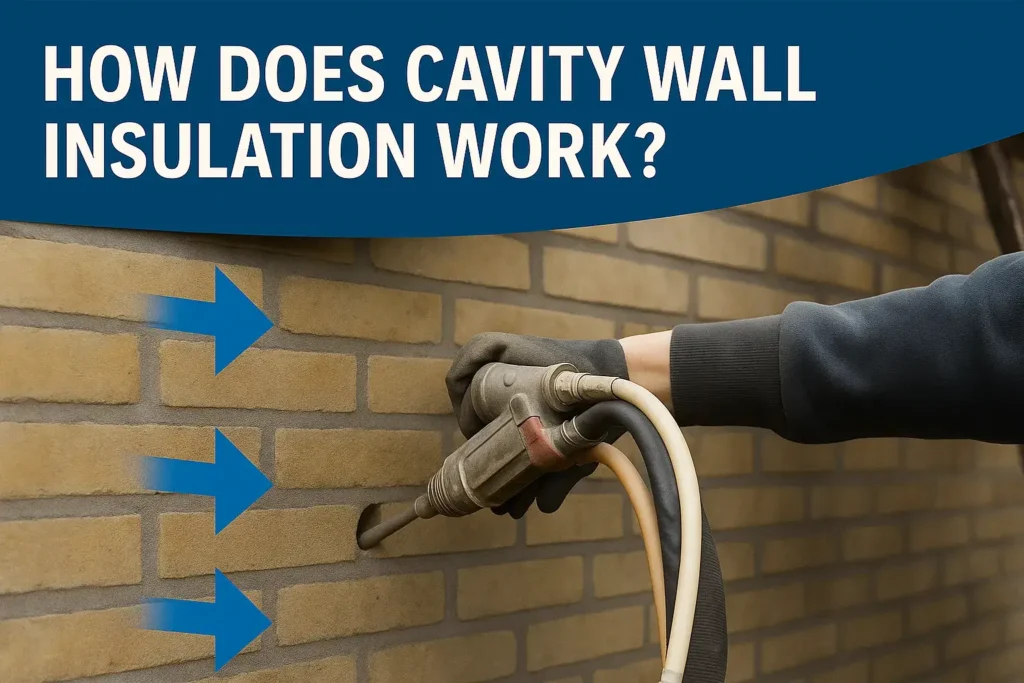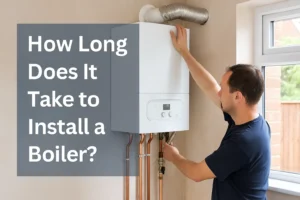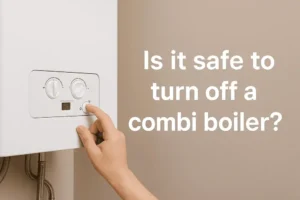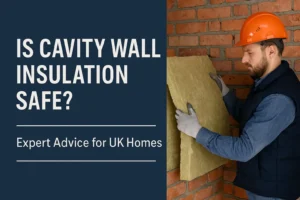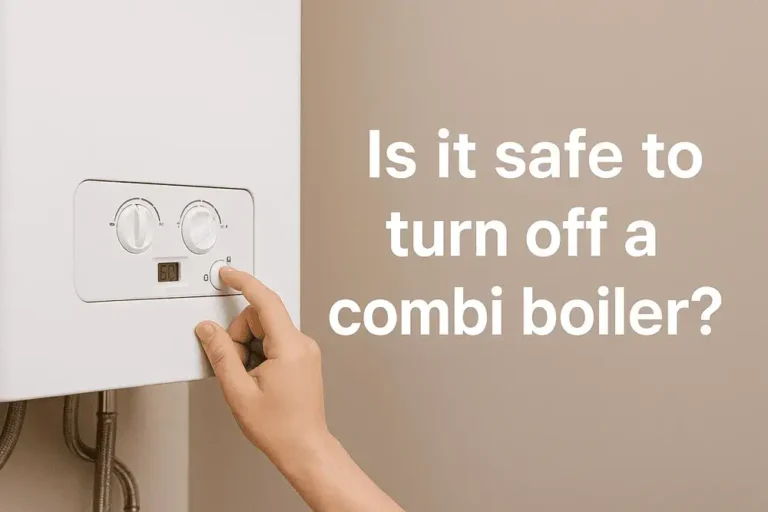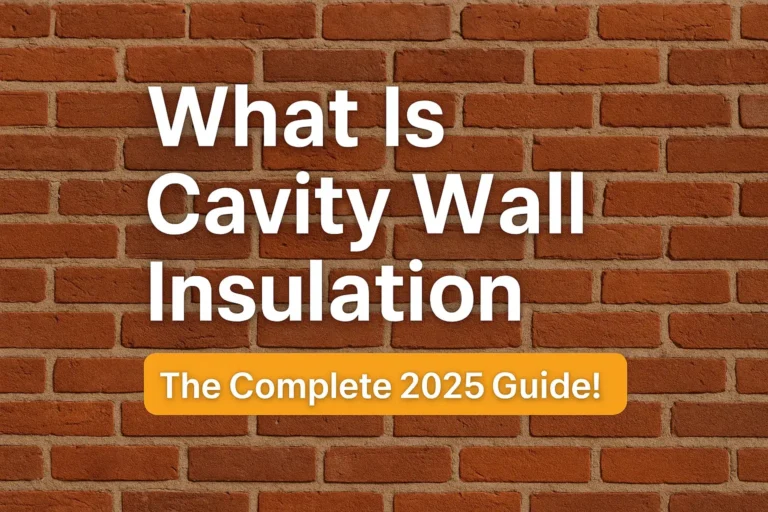Are you looking for a way to reduce your heating bills and make your home more energy efficient? If so, cavity wall insulation could be the answer. It’s one of the most cost-effective ways to keep your home warm in winter and cool in summer all while reducing your carbon footprint.
Table of Contents
ToggleBut how does cavity wall insulation work exactly? And how do you know if it’s right for your home?
In this guide, we’ll walk you through everything you need to know, including:
- What cavity walls are and how they work
- How cavity wall insulation is installed
- The types of materials used
- Costs and potential savings
- Benefits, grants, and eligibility
By the end, you’ll know whether cavity wall with insulation is the right step for your home — and how to take action.
1. What Are Cavity Walls and How Do They Work?
To understand how cavity wall insulation works, it’s important to first understand how cavity walls work.
A cavity wall is made up of two separate walls (called ‘leaves’) with a gap or cavity between them. The outer wall faces the weather, while the inner wall faces your living space. This design was originally introduced to reduce moisture transfer from outside to inside by creating a barrier against rainwater.
However, while cavity walls help protect against damp, the air gap between the walls also allows heat to escape from your home. This can lead to higher heating bills and a colder living environment especially in properties without insulation.
Homes built in the UK after the 1920s are likely to have cavity walls, while older homes often have solid walls with no cavity. You can usually identify a cavity wall by checking the brick pattern: if all bricks are laid lengthwise in a uniform pattern, your home may have cavity walls.
2. How Does Cavity Wall Insulation Work?
Cavity wall insulation works by filling the gap between your property’s internal and external walls with an insulating material — usually mineral wool, polystyrene beads, or foam. This added layer slows down the movement of heat, helping to keep warmth inside during the winter and outside during the summer.
In simple terms, it acts like a thermal blanket wrapped around your home.
Here’s how it works in action:
- The insulation material traps air in the cavity.
- Since air is a poor conductor of heat, this significantly reduces heat loss through the walls.
- As a result, your home stays warmer for longer, and your heating system doesn’t have to work as hard.
This process not only improves energy efficiency but can also cut your heating bills by hundreds of pounds a year, depending on the size of your property.
If you’re wondering how does cavity insulation work, the principle is the same: block heat transfer by reducing air movement within the wall space. The insulating material creates a barrier to thermal flow, making your home more energy efficient and environmentally friendly.
3. The Cavity Wall Insulation Process:
Installing cavity wall insulation is a quick and non-intrusive process that typically takes just a few hours for a standard home. Here’s how it works step by step:
1. Property Assessment
A professional surveyor will first check if your property is suitable. They’ll assess:
- Wall type (cavity or solid)
- Wall condition (free from damp or damage)
- Cavity width (usually needs to be at least 50mm)
- Accessibility of external walls
2. Drilling Access Holes
Small holes (around 22mm) are drilled into the external wall at regular intervals — usually about 1 metre apart — to access the cavity.
3. Injecting the Insulation
The chosen insulation material (such as polystyrene beads or mineral wool) is blown or injected into the cavity using specialist equipment. The material spreads evenly to form a thermal barrier across the entire wall.
4. Sealing the Holes
Once the cavity is fully filled, the access holes are sealed with mortar, colour-matched to the existing brickwork wherever possible. The finish is tidy and barely noticeable.
5. Final Checks
After installation, the technician will ensure the insulation is evenly distributed and that the site is clean and free of debris.
Note: This is not a DIY job — it must be carried out by a qualified installer to ensure compliance with building regulations and long-term performance.
Check If You Qualify For FREE Cavity Wall Insulation
4. Types of Cavity Wall Insulation Materials
There are several types of insulation materials used to fill cavity walls. Each has its own benefits, costs, and suitability depending on your property type and insulation goals.
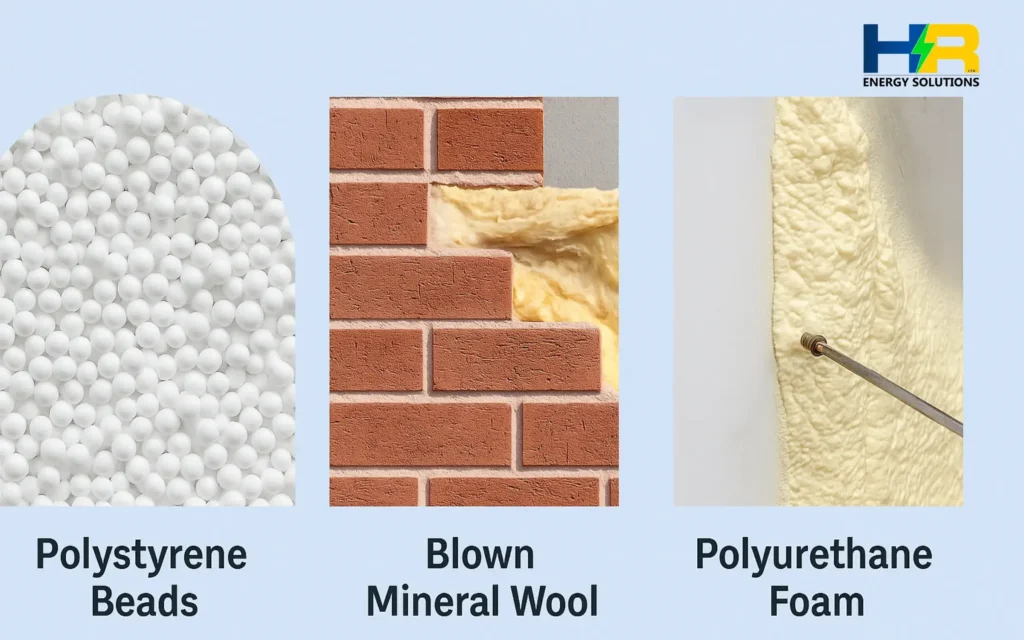
Here’s a breakdown of the most common options:
1. Polystyrene Beads (EPS Beads)
- Description: Small, lightweight beads injected with adhesive
- Benefits: Excellent thermal performance, flows easily into narrow cavities, resistant to water
- Drawbacks: Can occasionally leak from airbricks if not installed properly
- Typical Cost: £18 – £22 per m²
2. Blown Mineral Wool (Glass or Rock Wool)
- Description: Fibrous material blown into the wall cavity using air pressure
- Benefits: Fire-resistant, good thermal and acoustic performance, widely used in ECO4 schemes
- Drawbacks: Can absorb moisture if walls are not in good condition
- Typical Cost: £13 – £18 per m²
3. Polyurethane Foam
- Description: Expanding foam that fills even the smallest gaps
- Benefits: Very effective at sealing gaps and preventing draughts
- Drawbacks: Higher cost, not the most eco-friendly option
- Typical Cost: £22 – £26 per m²
4. Wool Fibre (Natural Insulation)
- Description: Made from sheep’s wool or other natural fibres
- Benefits: Eco-friendly, moisture-regulating, excellent insulation
- Drawbacks: More expensive and less widely available
- Typical Cost: £25 – £30 per m²
5. Cavity Wall Insulation Boards
- Description: Pre-cut rigid boards installed during construction
- Benefits: High performance, easy to integrate with new build designs
- Drawbacks: Not suitable for retrofitting existing homes
- Typical Cost: £15 – £17 per m²
Choosing the right material depends on your home’s structure, cavity width, exposure to weather, and your budget. Our team can help you select the most appropriate solution.
5. How Much Does Cavity Wall Insulation Cost?
The cost of cavity wall insulation depends on your property size, wall accessibility, and the insulation material used. On average, UK homeowners can expect to pay between £530 and £4,600, but many may qualify for funding through schemes like ECO4 and the Great British Insulation Scheme (GBIS).
Average Installation Costs by Property Type:
| Property Type | Approximate Cost |
|---|---|
| Detached house | £2,500 – £4,600 |
| Semi-detached house | £820 – £2,700 |
| Mid-terrace house | £530 – £1,500 |
| Bungalow | £1,000 – £2,400 |
| Flat (per unit) | £560 – £1,000 |
Material Cost per m²:
| Insulation Type | Cost Range per m² |
|---|---|
| Polystyrene Beads | £18 – £22 |
| Mineral Wool | |
| Polyurethane Foam | £22 – £26 |
| Wool Fibre (Natural) | £25 – £30 |
| Insulation Boards | £15 – £17 (New builds) |
Additional Costs to Consider:
- Initial property survey: £75 (may be free with grant-funded work)
- Wall tie repairs: £1,000 – £2,000 (if needed)
- Cavity clearing (if blocked): £50 – £100+
Good news: If you’re eligible for ECO4 or GBIS, your insulation may be completely free of charge. We can help you check your eligibility today.
6. Benefits of Cavity Wall Insulation
Installing cavity wall insulation is one of the most cost-effective upgrades you can make to your home. It offers a wide range of long-term benefits, both financially and environmentally.
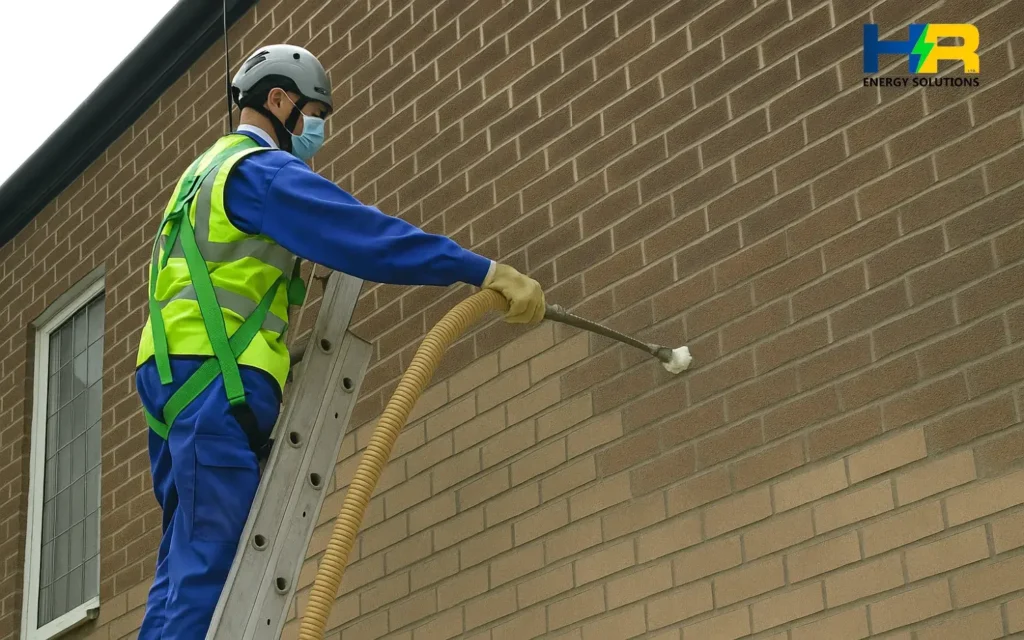
1. Lower Energy Bills
Up to 33% of heat in an uninsulated home escapes through the walls. Cavity wall insulation reduces this heat loss, helping you cut down on your heating costs by up to £680 per year, depending on your home type and usage.
2. A Warmer, More Comfortable Home
Insulation stabilises internal temperatures by keeping warm air in during winter and blocking excess heat in summer. Say goodbye to chilly draughts and stuffy rooms — your home stays cosy all year round.
3. Boosted Property Value
Energy-efficient homes are more attractive to buyers. Cavity wall insulation improves your EPC rating, which could increase your property’s resale value and marketability.
4. Reduced Carbon Footprint
Using less energy to heat your home means fewer carbon emissions. A typical insulated home can reduce CO₂ output by up to 1,100kg per year, contributing to a greener planet.
5. Quick Payback Period
Most homeowners recoup the cost of installation within 3 to 5 years through energy savings. With grant funding, the payback is often immediate.
6. Access to Free Insulation Grants
Many UK households now qualify for fully-funded cavity wall insulation through ECO4 or the Great British Insulation Scheme (GBIS). If you’re eligible, you could enjoy all these benefits without paying a penny.
7. How to Check If Your Walls Can Be Insulated
Before installing cavity wall insulation, it’s important to determine whether your home is suitable. Not all properties have cavity walls — and even if they do, they must meet certain conditions for insulation to be effective.
Do You Have Cavity Walls?
You likely have cavity walls if:
- Your home was built after 1920
- The wall is more than 260mm thick (check near a door or window)
- The brickwork shows a regular pattern (all bricks laid lengthways)
If your home was built before 1920, it likely has solid walls, which require different insulation methods.
Visual Checks You Can Do:
- Uniform brick pattern = cavity wall
- Alternating brick lengths = solid wall
- Use a tape measure to check wall thickness at an exposed doorway or window
Professional Assessment
For a definitive answer, a professional surveyor can:
- Perform a borescope inspection (inserting a tiny camera through a drilled hole)
- Check for existing insulation or damp issues
- Confirm the cavity width is at least 50mm
- Ensure walls are in good condition and not exposed to driving rain or flood risk
8. Is Cavity Wall Insulation Worth It?
Absolutely for most UK homes, cavity wall insulation is one of the most cost-effective energy-saving upgrades available.
Here’s why:
- It can cut your energy bills by hundreds of pounds per year
- It improves year-round indoor comfort
- It supports eco-friendly living by reducing heat loss and emissions
- It’s a low-maintenance, long-lasting solution
- And in many cases, it’s fully funded through government grants
But depending on your home’s age, structure, and location, there may be a few considerations to keep in mind.
To explore the pros, cons, and whether it’s right for your home, read our full guide: Cavity Wall Insulation – Is It Worth It?
9. How Long Does Cavity Wall Insulation Last?
One of the best things about cavity wall insulation is its longevity. When installed correctly by a certified professional, it can last for at least 25 years, often matching the lifespan of the property itself.

What Affects Its Lifespan?
Several factors can influence how long the insulation performs effectively:
- Installation quality: Poor workmanship can lead to gaps or damp issues
- Wall condition: Cracks or penetrating damp can reduce performance
- Material type: Most modern materials (e.g. mineral wool, EPS beads) are designed to last decades
- Moisture management: Insulation must stay dry to maintain thermal performance
How to Know If Yours Needs Replacing
If your home was insulated over 25 years ago or you’re unsure about its condition, a cavity wall inspection can check for:
- Cold spots
- Uneven heating
- Damp patches
- Settlement or degradation of the insulation material
Want to know more? We cover this topic in depth here: How Long Does Cavity Wall Insulation Last?
10. Grants & Free Cavity Wall Insulation (ECO4 & GBIS)
Worried about the cost of cavity wall insulation? You may not have to pay a penny. Thanks to government-backed schemes, many UK households qualify for free cavity wall insulation under:
ECO4 (Energy Company Obligation)
The ECO4 scheme helps low-income and vulnerable households improve their homes’ energy efficiency. If you receive income based qualifying benefits such as Universal Credit or Pension Credit, etc, you may be eligible for fully funded insulation.
GBIS (Great British Insulation Scheme)
GBIS is aimed at homes with low EPC ratings (D-G) and Council Tax Bands A-D in England (A-E in Scotland and Wales). Even if you’re not on benefits, you may qualify based on your home’s energy performance and income bracket.
You May Be Eligible If:
- Your home has a low EPC rating
- You receive certain income-based benefits
- You live in a Council Tax Band A-D (England) or A-E (Scotland/Wales)
- Your property is suitable for insulation
Eligibility is assessed during a free home survey. If you qualify, the entire cost of cavity wall insulation can be covered no hidden fees.
Check your eligibility now — H&R Energy Solutions can guide you through the process and help secure funding.
Cavity Wall Insulation Working FAQs
What is the downside to cavity wall insulation?
If installed incorrectly or in unsuitable properties, cavity wall insulation can lead to internal damp issues. Homes exposed to heavy rain or with damaged brickwork are most at risk. It’s essential to get a professional survey before installation.
Why is my house so cold even with cavity wall insulation?
Cavity wall insulation only addresses one part of your home’s heat loss. If your loft, windows, or floors aren’t insulated or if the insulation is patchy or old cold spots and draughts can still make your home feel chilly.
What houses should not have cavity wall insulation?
Homes with solid walls, narrow or rubble-filled cavities, timber or steel frames, or those in exposed or flood-prone areas are generally unsuitable. A professional assessment is the best way to know for sure.
Summary: Why Cavity Wall Insulation Is a Smart Move
Cavity wall insulation is one of the most effective ways to make your home warmer and more energy efficient. It helps reduce heat loss, lower energy bills, and improve comfort all year round.
The process is quick, low-maintenance, and can last over 25 years when installed properly. In many cases, it’s even available for free through government grants like ECO4 and GBIS.
However, not every property is suitable. That’s why a professional survey is important to check wall condition, cavity width, and insulation needs before installation.
If your home qualifies, cavity wall insulation is a smart upgrade with long-term benefits for both your budget and the environment.

